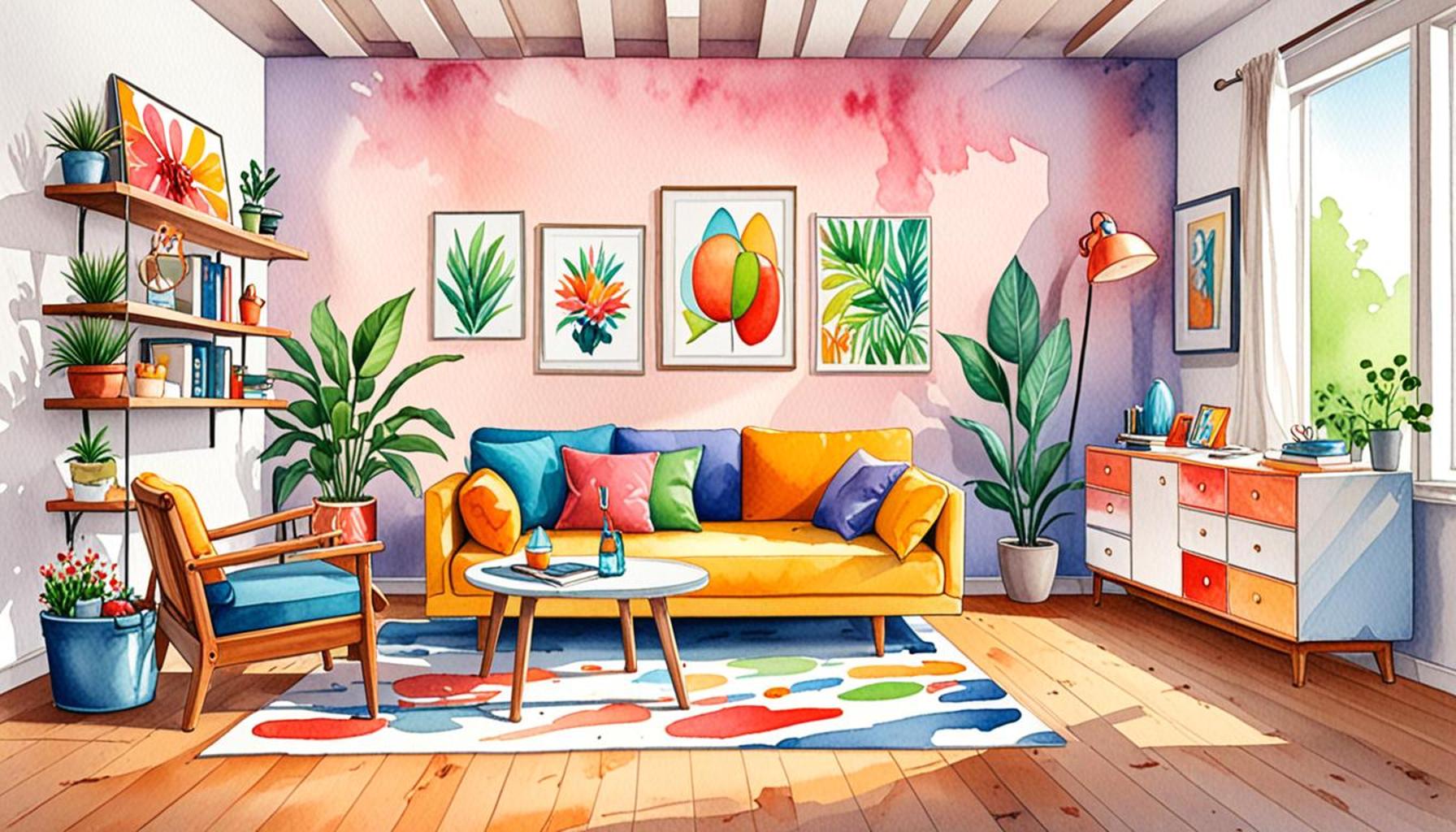Design of Multifunctional Furniture: The Art of Combining Style and Practicality in Limited Spaces

Understanding Multifunctional Furniture
As urban living spaces become increasingly compact, the demand for multifunctional furniture is surging. This innovative design approach merges aesthetics with utility, making it a crucial element for modern homes. In Nigeria, where city life often translates to smaller dwellings, the right furniture can transform limited space into a stylish and practical haven.
Why Choose Multifunctional Furniture?
There are several compelling reasons to opt for multifunctional furniture in your home. Here are some key benefits:
- Maximizes Space: In smaller homes and apartments, every inch matters. Multifunctional furniture serves multiple purposes, allowing homeowners to create an open and airy feeling even in compact areas. For example, a dining table that doubles as a desk can eliminate the need for additional furniture while providing the same functionality.
- Enhances Style: Multifunctional designs don’t compromise on aesthetics; they can serve as statement pieces that add character to a room. The intricate designs of contemporary Nigerian furniture often reflect cultural heritage, with stylish materials and colors that bring warmth and vibrancy to any space.
- Cost-Effective: Investing in versatile furniture can significantly reduce costs over time. Instead of buying separate pieces for various purposes, multifunctional options can ensure you get high value from a single item, which is particularly beneficial in areas where disposable income can be limited.
Popular Examples in Nigerian Households
To illustrate the practical applications of multifunctional furniture, here are some popular examples that can be found in Nigerian homes:
- Sofa Beds: Perfect for those who often host family or friends, sofa beds can easily transform a living room into a guest bedroom. With the growing trend of hosting Airbnb guests in cities like Lagos, this furniture piece is increasingly in demand.
- Storage Ottomans: These clever pieces serve as additional seating while providing hidden storage for items such as blankets or magazines. In a bustling home, they can help create a clutter-free environment, essential for maintaining a peaceful atmosphere.
- Drop-Leaf Tables: An essential for dining areas, these tables can expand when entertaining guests, making them perfect for intimate dinners and larger gatherings alike. Their flexibility allows families to adjust their dining space as needed without requiring a large, consistent footprint.
This article delves into the exciting world of multifunctional furniture design, exploring how to strike a balance between style and practicality. Discover how you can enhance your living space while expressing your personal aesthetic. Embracing multifunctional furniture is not just about adapting to limited space; it’s also about celebrating creativity and cultural relevance in contemporary living. It invites you to explore new design possibilities and harness the full potential of your home.
SEE ALSO: Click here to read another article

Designing for Dual Purposes
The heart of multifunctional furniture design lies in its ability to adapt to the evolving demands of contemporary lifestyles. As urbanization continues to shape living environments, designers are embracing creative solutions that marry function with form. This trend is particularly relevant in Nigeria, where many families reside in apartments that can seem cramped. Understanding the fundamentals of multifunctional design can provide insight into how to best utilize available space without sacrificing style.
The Principles of Multifunctional Furniture Design
To achieve an effective multifunctional furniture piece, several principles come into play:
- Versatility: The primary goal of multifunctional furniture is to adapt to various uses. Designers often employ mechanisms that allow furniture to transform effortlessly. For instance, a coffee table with adjustable heights can serve as a workspace or dining surface, catering to different needs throughout the day.
- Compact Design: Space-saving features are vital in areas where floor space is limited. Foldable chairs or expandable dining sets are prime examples. These items can be tucked away when not in use, ensuring spaces remain functional yet uncluttered.
- Integrated Storage: Smart storage solutions are a hallmark of multifunctional pieces. Furniture that incorporates hidden compartments helps keep belongings organized and out of sight. This capability is essential for Nigerian households, where large families often need to optimize their storage options without compromising aesthetics.
Craftsmanship and Materials
The materials used in designing multifunctional furniture play a crucial role in achieving the desired balance of durability and style. In Nigeria, traditional craftsmanship infuses furniture design with a rich heritage. Natural woods like mahogany and teak are popularly utilized for their strength, while also offering a touch of elegance to any piece. Moreover, opting for locally sourced materials not only supports local artisans but also minimizes environmental costs associated with long-distance transportation.
Fabric selection is equally as significant. Textiles should mend resilience with appealing aesthetics; durable fabrics that resist wear and tear are preferable, especially in households with children. Incorporating bold, vibrant patterns can contribute to a room’s design narrative, making multifunctional furniture not just useful but also visually captivating.
As you explore the world of multifunctional furniture, consider how these principles can be applied in your home. The ability to maximize space while maintaining style does not merely enhance interiors; it also fosters a mindful approach to living that aligns with the realities of modern urban life. Through thoughtful design and material choices, the quest for multifunctional furniture transcends the basics of utility, inviting innovation and creativity into everyday living.
Design of Multifunctional Furniture: The Art of Combining Style and Practicality in Limited Spaces
In today’s modern living environments, where space is a premium, the design of multifunctional furniture plays a pivotal role. This innovative approach allows homeowners to maximize utility without compromising aesthetics, creating harmony in limited spaces.
One often-overlooked aspect of multifunctional furniture is how it can adapt to changing needs. For instance, a stylish sofa can transform into a comfortable bed, while a sleek coffee table can expand into a dining space. This adaptability is not only practical; it also embodies a design philosophy that celebrates both functionality and beauty.
Moreover, the incorporation of sustainable materials in multifunctional designs promotes environmental consciousness. As consumers become increasingly aware of their carbon footprint, opting for furniture that serves multiple purposes does not just save space—it also encourages a more sustainable lifestyle.
To further illustrate the advantages of multifunctional furniture, let’s explore the benefits in a structured format:
| Category 1 | Category 2 |
|---|---|
| Space Efficiency | Multifunctional furniture pieces allow for optimal use of small areas, merging living and working spaces seamlessly. |
| Cost-Effectiveness | Investing in a few key multifunctional items can reduce overall spending by decreasing the need for multiple standalone pieces. |
This table highlights just a fraction of the potential benefits of multifunctional furniture, enticing readers to delve deeper into this transformative design trend. As you explore various options, consider how these pieces can not only enhance your living space but also reflect your unique style and values.
YOU MAY ALSO LIKE: Read read another article
Innovative Solutions for Small Spaces
As urban living continues to evolve, the quest for innovative solutions in furniture design has never been more pertinent. Multifunctional furniture serves as a beacon of creativity, allowing individuals and families to maximize their living spaces without compromising on style. In Nigeria, where urban density is rising, the demand for such designs is not only practical but essential for enhancing quality of life.
Cultural Influences on Multifunctional Design
The vibrant cultures and traditions of Nigeria significantly influence the design of multifunctional furniture. Designers are increasingly drawing inspiration from local customs and aesthetic preferences. For instance, the use of traditional motifs and patterns not only brings cultural significance but also enriches the aesthetics of modern furniture. This melding of the old and the new creates pieces that are not only functional but also resonate deeply with local identity.
Consider a traditional Nigerian stool, often a focal point in households. By reimagining this staple as a storage unit or as part of a convertible seating arrangement, designers honor heritage while embracing contemporary needs. Such adaptations illustrate how cultural roots can seamlessly integrate into the demand for practicality in limited spaces.
Ergonomics and User-Centric Design
Beyond merely being multifunctional, the best designs in furniture also prioritize user comfort and ergonomics. In Nigeria, where many work from home or engage in communal living, ergonomic considerations become critically important. Furniture like adjustable desks that can transition from sitting to standing is gaining popularity among individuals working remotely. Similarly, sofas that can convert into beds serve as a comfortable place for relatives who may come to stay for extended periods.
- Adaptable Seating: Modular sofas that can be rearranged into different configurations allow families to change their layout based on occasion or need, transforming a casual space into one suitable for hosting guests.
- Fold-down Desks: Compact working solutions such as fold-down desks provide essential workspace without infringing on the already limited room dimensions, making it feasible for students and professionals alike to focus on their tasks efficiently.
Sustainability in Multifunctional Furniture
As awareness of environmental impacts grows, the incorporation of sustainable practices in the design of multifunctional furniture becomes increasingly crucial. In a nation such as Nigeria, where environmental sustainability is gaining traction, furniture makers are exploring eco-friendly materials. Bamboo, reclaimed wood, and non-toxic finishes are being integrated into designs, offering both style and a reduced carbon footprint.
Additionally, the modular aspect of multifunctional furniture lends itself to sustainability by allowing consumers to replace or upgrade specific parts rather than discarding entire pieces. This approach reduces waste while also aligning with a growing trend towards minimalism in modern interiors.
In Nigeria, where local craftsmanship is rich in tradition, collaborating with artisans to create sustainable furniture can enhance local economies while preserving age-old techniques. The narrative behind each piece crafted serves not only as a testimony of artistry but also as a commitment to responsible living in compact environments.
By engaging with innovative designs that reflect cultural heritage, prioritize ergonomics, and embrace sustainability, Nigerians can take significant strides toward a harmonious balance between style and practicality in their limited living spaces. The evolution of multifunctional furniture thus becomes a canvas for conservation, connection, and creativity.
SEE ALSO: Click here to read another article
Conclusion
The design of multifunctional furniture encapsulates the essence of modern living, especially within the context of Nigeria’s congested urban landscapes. As the need for practicality grows, so does the importance of style—creating a harmonious fusion that responds to the multifunctional demands of contemporary life. This innovative approach not only maximizes space but also delivers a range of aesthetic choices that reflect Nigeria’s rich cultural heritage.
By incorporating ergonomics into every piece, designers prioritize user comfort, ensuring that spaces remain inviting while remaining functional. The adaptability of furniture pieces allows them to evolve with the needs of families, making them ideal for both everyday life and special occasions. Furthermore, as sustainability emerges as a global imperative, the trend towards using eco-friendly materials highlights a commitment to both environmental conservation and cultural preservation.
Nigeria stands on the cusp of a furniture revolution, fueled by artisan traditions and contemporary design principles. By embracing multifunctional designs, the country not only enhances the quality of life in limited spaces but also nurtures a deeper connection to its cultural identity. This unique intersection presents an opportunity for both consumers and designers to explore, innovate, and advocate for solutions that are as responsible as they are stylish. As the narrative of furniture design evolves, so too does the embodiment of cultural creativity and practical sophistication in every household.



